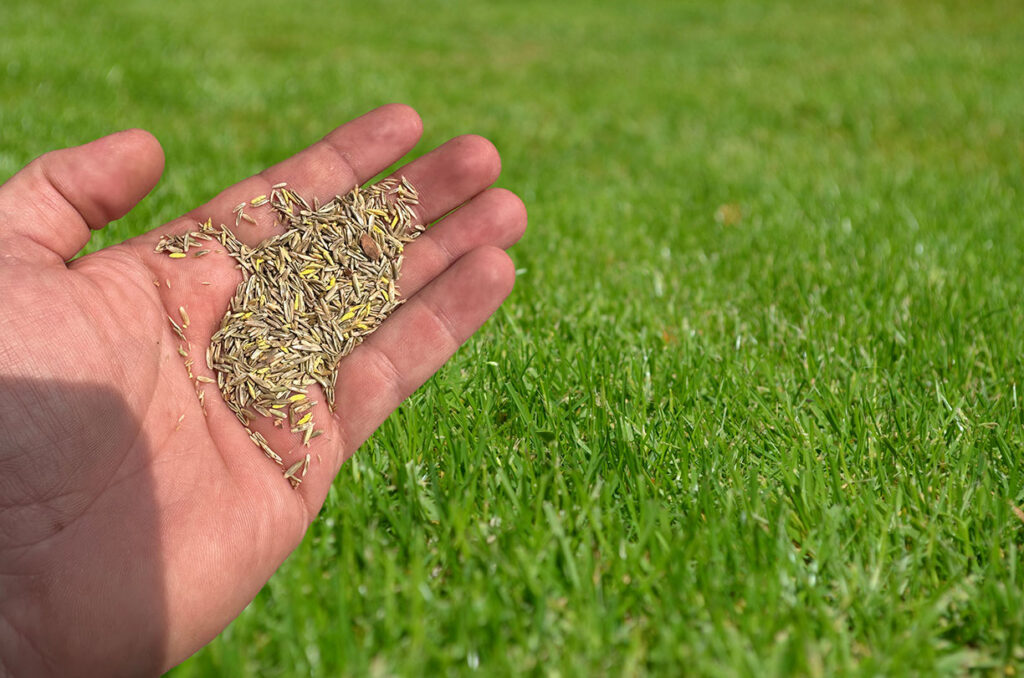
home | Lawn Care | Leaf Management | Garden Bed Prep | Tree & Shrub Care | Irrigation System Maintenance | tool storage
Lawn Care
Mowing
Adjust mower height to the appropriate level (usually 2-3 inches)
Avoid cutting grass too short
Adjusting your mower height to the ideal level—typically between 2 to 3 inches—is an essential part of autumn lawn care. This simple step helps maintain a healthy, resilient lawn as the temperatures drop. Additionally, ensuring that your mower blade is properly sharpened is key for a clean, precise cut, rather than tearing the grass. While there are several blade sharpening techniques, the most important factor is securely holding the blade while cutting at the correct angle. The Sporgain Lawn Mower Blade Sharpener provides a perfect 15 or 45-degree cutting surface for optimal results.
When mowing, avoid cutting your grass too short, as this can stress the plants, making them more vulnerable to lawn diseases and pests, and decreasing their ability to withstand colder weather. By keeping your grass slightly taller, you provide better insulation against frost and help it retain moisture more effectively. A slightly taller lawn also encourages deeper root growth, improving your lawn’s overall resilience. This is especially beneficial in the fall, as it prepares your lawn to recover quickly in the spring.
Adopting these proper mowing practices not only helps achieve a lush, vibrant lawn but also contributes to its long-term health and sustainability. Maintaining the right height and blade sharpness is an essential part of effective lawn maintenance that supports your lawn’s vitality year-round.
Fertilization
Apply a fall-specific fertilizer
Benefits of high potassium and phosphorus content
Applying a fall lawn fertilizer is a crucial step in autumn lawn care, as it provides the essential nutrients your lawn needs to thrive through the colder months. Autumn lawn fertilization typically involves fertilizers that are specially formulated with higher levels of potassium and phosphorus, two key nutrients that support your lawn’s health and resilience during winter dormancy.
Potassium strengthens grass cell walls, enhancing its resistance to lawn diseases and environmental stress, while phosphorus promotes strong root growth, enabling the lawn to absorb more water and nutrients. These benefits are particularly important as your lawn prepares for winter, allowing it to build a stronger foundation for a healthier, more vibrant lawn in the spring.
By selecting a best autumn fertilizer designed for fall lawn care, you ensure your grass is well-nourished and ready to withstand the challenges of the colder months. With the right fall fertilizing tips, your lawn will have the resilience it needs to bounce back quickly, making it more resilient and vigorous come spring. Don’t forget to incorporate slow-release fertilizers to give your lawn the steady nutrients it requires throughout the season.
Aeration
Process of lawn aeration
Benefits for root development and soil health
Lawn aeration is a crucial lawn care practice that involves perforating the soil with small holes to alleviate soil compaction and enhance the flow of air, water, and nutrients to the grass roots. Using tools like a core aerator or lawn aerator shoes, this process removes small plugs of soil from the lawn. These openings allow for better root penetration, more effective absorption of essential resources, and improved turf aeration.
The benefits of aeration extend to enhancing soil health by reducing compaction and promoting microbial activity, resulting in a better overall soil structure. This process not only encourages deeper root development but also strengthens the lawn, making it more resilient to environmental stresses and better able to recover in the spring. Aeration is an essential lawn treatment for achieving a lush, thriving lawn.
For those seeking alternatives to mechanical aeration, overseeding and organic lawn applications like Thatch Buster from Turf Titan can also help. These treatments use powerful microbes to naturally break down thatch and organic debris, transforming them into sustainable nutrients for your lawn. This organic method improves soil aeration, eliminating the need for expensive and hard-to-use mechanical equipment. As the microbes work to soften the soil, they enhance water absorption, improve grass health, and support robust root growth. This approach promotes a vibrant, healthy lawn that can better withstand drought conditions and maintain long-term lawn health.
Overseeding
When and how to overseed
Types of grass seeds suitable for fall
Overseeding should be done in late summer to early fall, ideally when temperatures are cooler but still conducive to seed germination. This timing allows new grass seeds to establish themselves before the onset of winter. To overseed effectively, start by mowing the lawn slightly shorter than usual to ensure the seeds make good contact with the soil. Next, use a rake or a lawn scarifier to lightly disturb the soil surface, which helps the seeds to germinate more successfully. Spread the grass seed evenly across the lawn, either by hand or with a broadcast spreader, and lightly water the area to promote germination. For fall overseeding, choose grass seeds that thrive in cooler temperatures, such as perennial ryegrass or fescue blends, which are known for their rapid germination and adaptability to autumn conditions. These varieties will establish quickly and provide a lush, green lawn that can thrive through the winter and be ready for the growing season in spring.
You might as well just get the “Lawn Dad – Feed & Grow” Bundle and Save 20%

HOME | Lawn Care | Leaf Management | Garden Bed Prep | Tree & Shrub Care | Irrigation System Maintenance | tool storage
- The links on this page are affiliate links that give this page a small percentage of sales generated by the volume of visitors to the affiliated partners.






